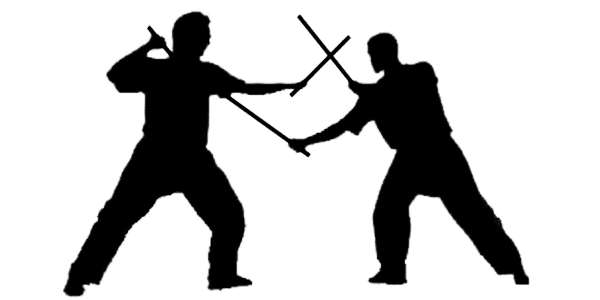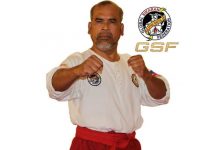 The recording and documentation of history is an arduous and often difficult undertaking. While reading about history we frequently believe the point of view of the author; however, this is often incomplete and inaccurate. In particular, when tracing the origin of an art of war, such as the filipino warrior arts of Eskrima, it is often difficult to string together the bits and pieces of fragmented information into chronological order. Also, since the exact origin of the art was never documented by those who were directly responsible for its founding, much is left to speculation and the cross-referencing of pertinent information to historical events in the surrounding geographical region.
The recording and documentation of history is an arduous and often difficult undertaking. While reading about history we frequently believe the point of view of the author; however, this is often incomplete and inaccurate. In particular, when tracing the origin of an art of war, such as the filipino warrior arts of Eskrima, it is often difficult to string together the bits and pieces of fragmented information into chronological order. Also, since the exact origin of the art was never documented by those who were directly responsible for its founding, much is left to speculation and the cross-referencing of pertinent information to historical events in the surrounding geographical region.
INTRODUCTION
Centuries old, the Filipino warrior arts have long been the backbone of Filipino society. It was the practice and preservation of these arts that have kept the Philippine archipelago from permanent domination by a foreign power. There are several hundred styles of these warrior arts presently being preserved and taught throughout the Philippines. Although known by many names, often descriptive of the styles and names of their founders and enemies (i.e., Binas Arnis, Italiana style), the Filipino warrior arts can be classified by three distinct territorial styles –Arnis, Eskrima, and Kali — that are found in the northern, central and southern Philippines, respectively.
It has been postulated that the Filipino warrior art of Escrima originated in India and that it was brought to the Philippines by people who traveled through Indonesia across a land bridge known as the Riouw archipelago that linked the Malay peninsula to Sumatra, and across another land bridge that connected Malaya to the Philippine islands. Indonesian Tjakalele and Malay Silat Melayu are two forms of combat said to have been introduced to the Philippines via these now-sunken routes. The ninth century Tang dynasty brought goods to the Philippines from East Asia and Malaysia. These countries’ combat methods of Kuntao and Silat had a great influence on the development of Kali, which is the “mother art” of the Philippines. Legends claim that ten Datus (chieftains) left Borneo and settled in Panay where they established the Bothoan in the twelfth century. The Bothoan was a school where the Datus taught Kali along with academic subjects and agriculture. It was a kind of preparatory school for tribal leaders.
During the fourteenth century, a third migration of Malaysians to the Philippines took place. These immigrants were the ancestors of the Moro (Muslim) Filipinos of Mindanao and Sulu. They spread their cultural-religious beliefs as well as their Kali systems, which utilized bladed weapons of varying lengths. Datu Mangal is credited with bringing the art of Kali to Mactan Island; Sri Bataugong and his son Sri Bantug Lamay were said to have brought the art to the island of Cebu during the Majapahit Empire. Raja Lapu Lapu, the son of Datu Mangal, through constant struggle and war, developed a personalized Kali subsystem known as Pangamut. In the sixteenth century, he and Raja Humabon, the son of Sri Bantug Lamay, began to quarrel. A battle was mounting as Lapu Lapu accused Humabon of wrongfully taking land that belonged to his father. The battle, however, was never to take place, as the Philippines were unexpectedly visited by the Portuguese explorer Ferdinand Magellan.
In the early part of the sixteenth century, the Spanish set sail in search of a westward route across the Pacific to the Indies. Commander Ferdinand Magellan’s fleet of ships accidentally stumbled upon an unknown archipelago. On March 16, 1521, Magellan came upon the island of Samar. He decided that it was in his best interest to wait to attack, and thus dock at a nearby island. This island was uninhabited and so Magellan’s fleet took a few days of needed rest.
On March 18, the Spaniards took note of a boatload of natives coming toward their ships. Commander Magellan, seeing a strange opportunity, greeted them in friendship. This friendship was to develop, and the native islanders familiarized Magellan with the names of the surrounding islands that made up the archipelago. With assistance of the ship’s priest, Magellan baptized Raja Kolambu, the chief of Samar, and also Raja Humabon, the chief of Cebu, converting them to Catholicism and ultimately Spanish allegiance.
On April 27, Magellan led an expedition to nearby Mactan Island in hopes of conquering and then presenting it as a git to Raja Humabon. Unfortunately, as he and 49 Spanish conquistadors disembarked from their ships, they were confronted by 1,050 islanders, led by Raja Lapu Lapu, armed with iron-tipped fire-hardened bamboo lances and pointed fire-dried wooden stakes. Greatly outnumbered, Magellan was killed by the spears and arrows of Lapu Lapu’s men.
In 1543, Ruy de Villalobos, sailing from New Spain (Mexico), landed south of Mindanao and proceeded to name the entire archipelago the PHILIPPINES after King Philip II of Spain. It was not until 1565 that Miguel Lopez de legazpi, authorized by Philip II, colonized the island of Cebu, and a foothold was secured in the Philippines. When the Spaniards traveled to the island of Luzon in 1570, they found it inhabited by Filipino, Chinese and Indonesian cross-cultures, and upon their arrival they were confronted by Kalistas (Kali warriors) whose fighting method far exceeded theirs. But the Spaniards, using firearms defeated the inhabitants of Luzon. From then on, the art of Kali was prohibited, but it was still practiced and perfected by a dedicated few. The Filipino warrior arts were then preserved in native ritual dances called sinulog that had mock battles with swords as finales. Ironically, these dances were often performed for the Spaniards’ enjoyment.
Kalistas practiced their arts diligently, and hence developed extreme accuracy, speed, and agility. These attributes were a must. Because the Spaniards’ swords were sharp and readily cut through the Filipinos’ wooden weapons, many strikes to nerve centres along the body and limbs were mastered, allowing the Kalista to disarm and disable his opponent with a flurry of attacks.
During the 330 years of Spanish reign, after many skirmishes with Spanish fencing exponents and after careful observation, the art of Kali was altered. Many training methods were dropped and many new concepts and techniques were added. This, coupled with the influence of Spanish culture and language, prompted the evolution of Eskrima (aka. Arnis de Mano). It was the Spanish rapier and dagger systems that had the greatest influence on the development of Eskrima. The use of numbered angles of attack as well as what have become traditional Eskrima uniforms, were both influenced by the Spanish. It is also interesting to note that although Tagalog is the national language of the Philippines, many of the top Eskrima masters still teach their arts in Spanish, today.
From Mark V. Wiley’s Filipino Martial Arts








